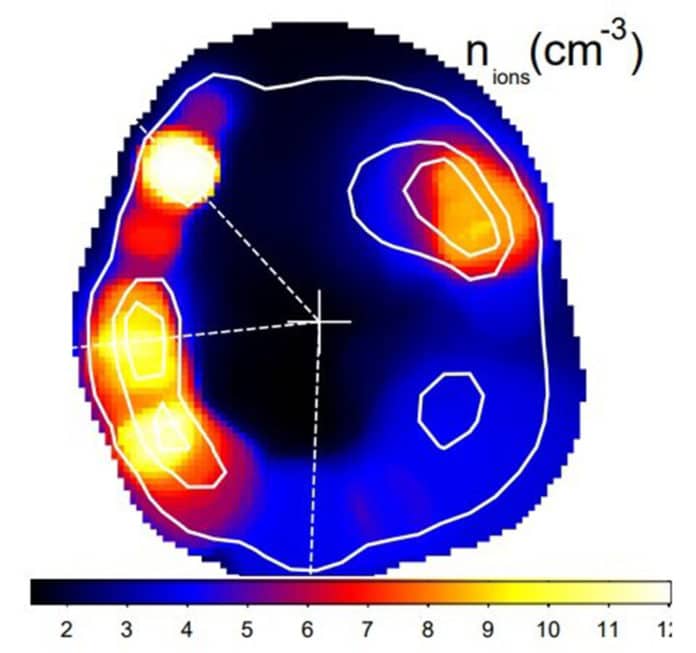A supernova remnant (SNR) is the remains of a supernova explosion. SNRs are extremely important for understanding our galaxy. They heat the interstellar medium, distribute heavy elements throughout the galaxy, and accelerate cosmic rays.
As they are three-dimensional objects, thus quite difficult to study. Smoothed particle inference (SPI) is the technique that makes this task easy. It is a flexible technique for fitting X-ray observations of extended objects, allowing modeling of the plasma as a collection of independent “smoothed particles,” or blobs, of plasma.
Recently astronomers from the University of Chicago, Illinois, have employed SPI and investigated the supernova remnant (SNR) DEM L71, mainly analyzing the X-ray emission from this source. DEM L71 is classified as a Type Ia SNR in the Large Magellanic Cloud (LMC), about 4,000 years old, showcasing a more or less regular shape.
Astronomers said, “Here, we extend the analysis of the SPI fit by calculating the composition of the swept-up material and the ejecta of DEM L71, and comparing those to a large set of supernova explosion models.”
Notably, scientists isolated the ejecta and computed the abundance of various elements. The total mass of the swept-up material was calculated to be about 228 solar masses. Scientists also confirmed that DEM L71 shows an excess of iron (Fe) in its central region.
Scientists noted, “The total mass of the swept-up material is much larger than that derived by a study conducted in 2003. This could be due to the volume of our surrounding medium, which exceeds the volume derived by the research carried out almost 20 years ago.”
The results suggest, especially the excess of iron in the central region of DEM L71, that it is a Type Ia explosion. The astronomers noted that high iron abundance is inconsistent with an origin either in typical LMC material or in core-collapse explosions.
Scientists are now planning to apply the SPI method to other SNRs observed with XMM-Newton, including W49B—a supernova remnant probably from a Type Ib or Ic supernova, located about 33,000 light-years away.
